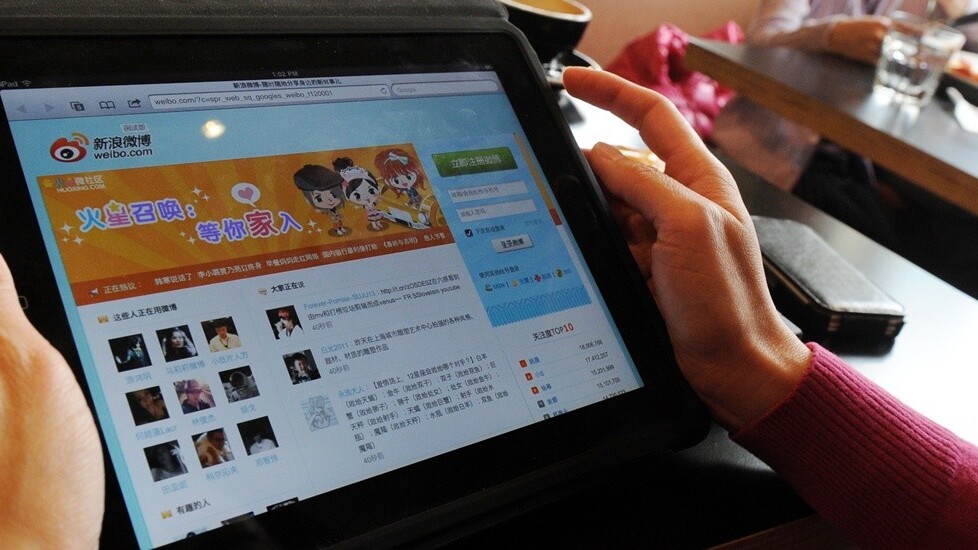
Chinese microblogging network Sina Weibo continued rapid growth last year after growing 73% to reach 503 million registered accounts at the end of 2012.
Sina CEO Charles Chao also revealed during a recent quarterly earnings call that the service had 46.2 million daily active users as of last December, up 82% year-on-year. Weibo had only just passed the 400 million mark in the third quarter of 2012.
2012 may have been a solid year for Sina Weibo, but the company will need to up its game if it’s to continue picking up users in 2013. Active user growth on Weibo slowed to 9% last quarter, according to Chao. Sina has admitted that it believes time spent on Weibo is down because of competition from rival Tencent’s WeChat messaging service, which topped 300 million users in January.
Chao remains unfazed, though, as he believe Weibo’s 500 million accounts are enough to generate a continuing positive network effect.
“Despite a slowdown in growth rate, we believe that Weibo has reached a critical mass, and will continue to grow in user base and user activities given the network size, especially with the more adoption of mobile Internet and the formation of ecosystem surrounding Weibo platform,” he said (via Seeking Alpha).
Living in Beijing the past few years, I’ve witnessed Weibo’s rise to become a vital part of Chinese society. Businesses prominently display their Weibo account info because they rely on the service to interact with their customers. It’s not uncommon for business meetings to begin with participants pulling out their phones to add each other. Still, in recent months, WeChat has been the talk of the town as well, and an increasing number of companies have begun displaying both Weibo and WeChat info. Tellingly, when I recently began following a Chinese startup magazine on Weibo, I received an automatic private message from them directing me to their WeChat account as well.
While the two services provide different functionality at their core, feature creep is drawing them more into competition with each other. WeChat, which is similar to Whatsapp, is primarily a private service, though it does have public features like a “Moments” status update feature and a “Drift Bottle” option that sends messages randomly into the aether.
Weibo, on the other hand, began as a highly public service, akin to Twitter. Only recently has it begun expanding its private messaging offering. Last fall, it added a Google+ Circles-like selective sharing feature that lets users send messages to private groups.
International media have been keen to point out Weibo’s potential for effecting social change in China. According to a recent survey from a communist party-backed magazine, Chinese government officials also acknowledge that potential, as more than half of them admitted that they fear microblogging services could cause social unrest. Weibo got a high-profile endorsement this week from former Google China head Kai-fu Lee, who called it “the media of choice that people flock to find or share information, and to voice or hear opinion”, despite having been banned from the service for three days because of his controversial opinions.
The central government itself is all too aware of the power of Weibo, as it applies active censorship to the service. Today’s microblogging services exist in complicity with the China’s leadership. The powers that be shut down the first generation of microblogs more than three years ago, and the current crop has made concessions in order to be allowed to operate.
(hat tip Tech in Asia)
Image credit: Mark Ralston / Getty Images
Get the TNW newsletter
Get the most important tech news in your inbox each week.





